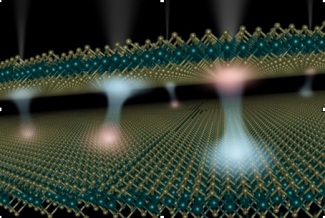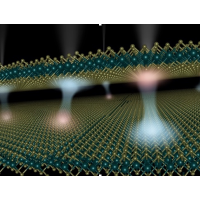News
The structural engineering of van der Waals (vdW) heterostructures via stacking and twisting has been recently used to create moiré superlattices, enabling engineering of the optical and electronic properties of solid-state systems reminiscent to ultracold atomic gases. Indeed, recent experiments on transition metal dichalcogenides (TMDs), a class of layered vdW semiconductors, have shown that moiré superlattice formation can lead to exciton trapping, host Mott insulating and superconducting states and act as unique Hubbard systems. However, due to the nanoscale size of typical moiré domains (on the order of 1-10 nanometers and thus much smaller than the optical diffraction limit), the effects of domain crystal structure on the excitonic properties has not been systematically investigated.
Recently, the Park group, in collaboration with the Lukin and Kim groups, has overcome this limitation and explored the impacts of the local crystal structure on interlayer excitons (an electron and a hole sitting in different layers) by fabricating near zero twist angle TMD bilayers. Small twist angles create domains that are so large that they can be resolved with far-field optics, enabling the investigation of how each individual domain affects interlayer exciton properties. The Park group studied the effect of applying a vertical electric field on interlayer excitons in a single domain. By analyzing the direction of the Stark shift close to zero electric field, the orientation of the interlayer exciton electric dipole was deduced. The dipole moments of the interlayer excitons point up or down depending on the domain type and this is due to the broken mirror symmetry of the moiré domain.
The observation of domain-specific interlayer exciton dipole moments indicates that an array of domains formed in a moiré superlattice can generate interlayer exciton arrays with alternating dipoles. Moreover, the interaction strength between the interlayer excitons can be tuned both by changing the twist angle and with an out of plane electric field. This work sheds light on the effect of crystal structure on TMD optical properties and it forms the foundation for engineering exciton properties via domain engineering in vdW heterostructures. The results thereby open new avenues for designing periodic domain structures to explore quantum emitter arrays, topological exciton insulators and strongly correlated exciton lattices for Hubbard model physics.

Figure Caption: The direction of the out of plane dipole moment of the interlayer exciton varies spatially in twisted bilayer semiconductors.
